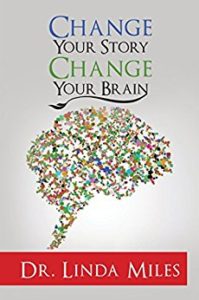Choose Joy: Using Mindfulness to Increase Joy in Your Life
- Do you want more joy in your life?
- Do you dwell on the negative in your day?
- Do you want to live more in the present moment?
“For as this appalling ocean surrounds the verdant land, so in the soul of man there lies one insular Tahiti, full of peace and joy, but encompassed by all the horrors of the half-lived life.”
Melville
Leah, a middle-aged administrative assistant, had a history of depression. She had experienced problems in her past relationships and isolated herself because she felt like a loser. She did not want to repeat that pattern, but her new partner began to complain that she was always negative.
Leah sought help to learn mindfulness to help her become aware of her negative thought patterns. She tended to apply a negative filter to her thinking. Cognitive psychologists have found that this type of despondent thinking is prevalent in those with depression and can be changed. Negative filter thinking refers to when we focus on the negative and discount the positive. The brain is like glue for negative and Teflon for positive. Leah started to notice the Teflon effect when she was given compliments or positive attention, and she observed the frequency of sticky negative thoughts.
Leah realized that she learned this way of thinking as she grew up and the fact that she could change her thinking and behavior gave her hope. Many people were raised in households with little joy and ample negative thought and behavioral patterns. Our models for thinking about the world are formed at young ages and become unconscious. By gently shining a light on inner-injurious thoughts without judging herself, Leah was able to become aware of why she felt and acted as she did. Through her practice of mindfulness, she could live more fully in the present moment.
By slowing down and experiencing the moment it is possible to feel more alive, and you’ll find that sensory perceptions are heightened. It is too easy to rush through life and not take a few minutes to enjoy the simple things. Leah began a practice of staying in the present moment and experiencing joy in simple acts like washing dishes. She let herself take in the lemony aroma of the soap. She slowed down for a few special moments to experience the feeling of the soap on her hands.
By developing mindfulness skills she learned to be able to focus on the now and the pleasure of the moment. Joyful moments began to be sticky while her negative thinking became more like Teflon. Since thought and feelings are meant to come and go, she practiced letting go of the detrimental glue of her negative preoccupation. As her focus changed to appreciation and celebration of life, she began to notice joy, love, and miracles in the everyday.
As Leah’s inner experience began to change, she smiled more and spoke more positively about life. Relationship researcher Dr. John Gottman has shown that couples who thrive over time have a 5 to 1 ratio of positive interactions over negative ones. Leah’s relationship improved as her negative filter weakened and she could expand her experience of joy. Research has shown that mindfulness practice can help those suffering with depression. Symptoms of depression are reduced with a regular practice and parts of the brain associated with negative arousal shrink in size. Volume and activity in brain centers associated with calm awareness are increased.
Choosing Joy
- Savoring moments of joy, like holding the hand of a baby, playing with a puppy, or stepping on fall leaves becomes a thought habit and the brain likes to repeats habitual ways of thinking.
- The feeling of joy is a practice; As you practice, your brain wires neural networks to fire in the direction of joyful thinking.
- As neuroscientist Dr. Wayne Drevets observed, “In the brain practice makes permanent.” Fortunately because of neuorplasticity, we can reroute our brains in the direction of gladness at any age.
- Notice if your thoughts are Teflon for positive and glue for the negative. Imagine letting thoughts pass through your mind like clouds overhead.
- Imagine a neural railway and that you’re laying track toward enticing stations.
- Look for joy in everyday things; open your eyes and imagination. Practice staying present in your body. Learn to focus as you experience moments in the day. Let your attention come into your senses as Leah did by smelling the soap when washing dishes and feeling her hands in the water.
- Develop a simple practice of mindfulness and practice it daily to increase your ability to feel joy in the moment. So much of life is spent replaying what happened in the past or imagining what might happen in the future that people do not fully experience the present.
- As you practice mindfulness you begin to realize that you can choose joy in the moment by getting away from repeating negative thought patterns and using your senses to fully experience the gifts of the present moment.
Your Turn
Take a moment to close your eyes and focus on your breathing. Breathe deeply using your diaphragm. Let your attention scan your body. Notice places of tightness or tension. Imagine that the tension is a knot and in your mind release the knot gently. Let it go. Feel the tension loosen.
Imagine a time when you were very happy. Allow yourself to experience that feeling. How does your body change as you recall this memory? Open your eyes and look around the room until you see something that gives you pleasure—a picture, a book, flowers. Allow your attention to linger on that sensation.
Train your brain to go to places of peace and joy. Set an intention to focus on joy instead of attack thoughts. As you do this you may experience small changes in your mood. Over time, your ability to choose joy and peace of mind will increase.
You will find if you practice this throughout the day, even for a moment at a time, you will see objects in more detail and begin to experience peaceful joy.
There is no right way to practice noticing your past thoughts and recreating them in the present. Keep trying this until it feels right for you. This is a very simple practice, however most people do not do it long enough to really make a difference. Make a commitment to set a time to practice. You can set a chime to ring on your phone as a reminder. You can do this alone or with others.
Change Your Story, Change Your Life
by Dr. Linda Miles
Do you feel as if someone else is writing the story of your life? Learn to program your brain to live with purpose. Change Your Story: Change Your Brain is a guide to living more fully in the present moment. As you live with greater intention, you can literally change the structure of your brain.
Marnie Pehrson Kuhns is a best-selling author and musician who helps subject matter experts leverage their wisdom and stories to create visibility, education, influence and sales in the marketplace. Whether she’s helping you distill your wisdom into books and information products or create visibility for your company, Marnie focuses on creating connection and loyalty.
Marnie helps her clients lead with their stories, connect from the heart, educate their market, and create loyal customers who send word-of-mouth referrals.








